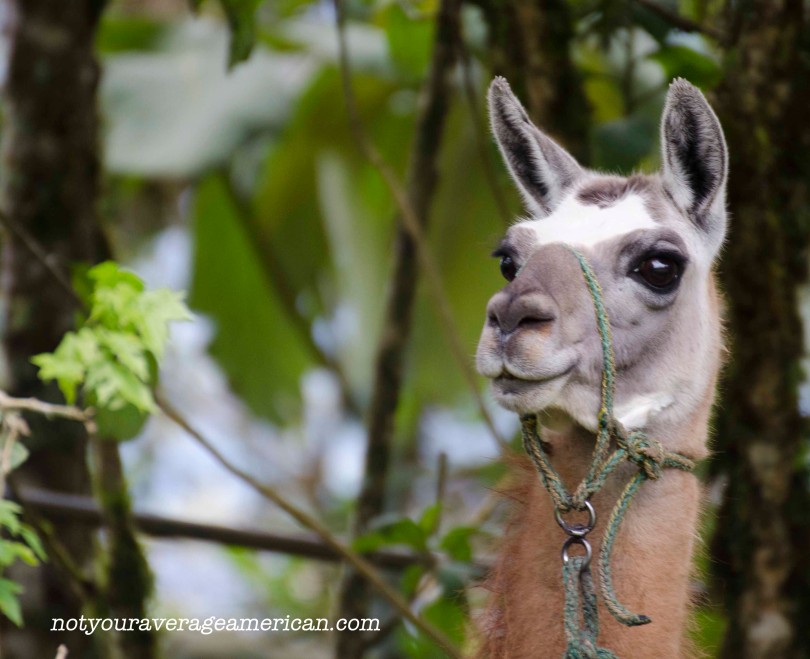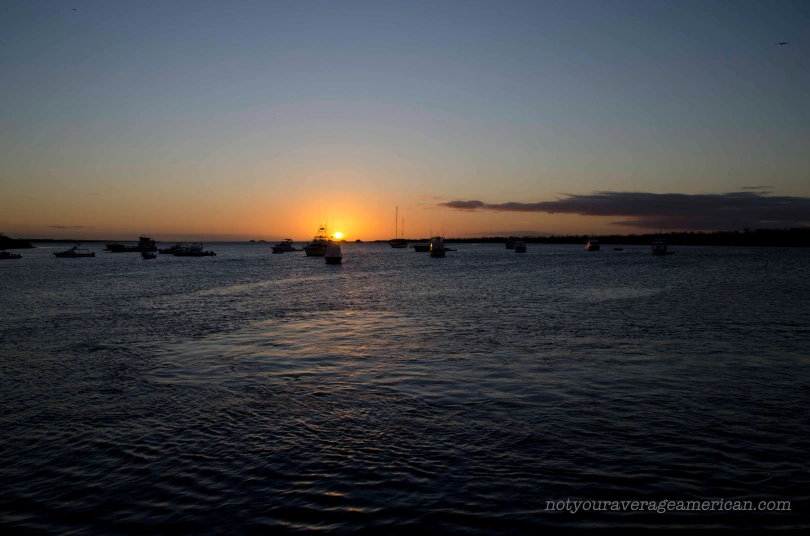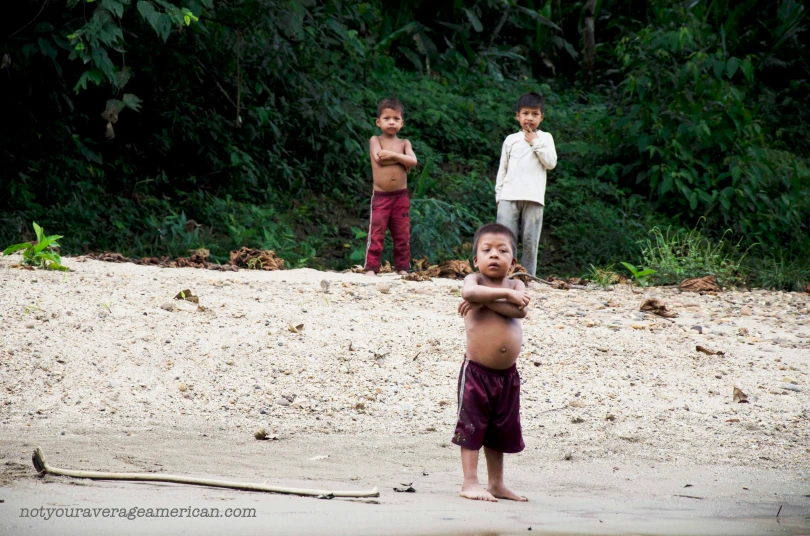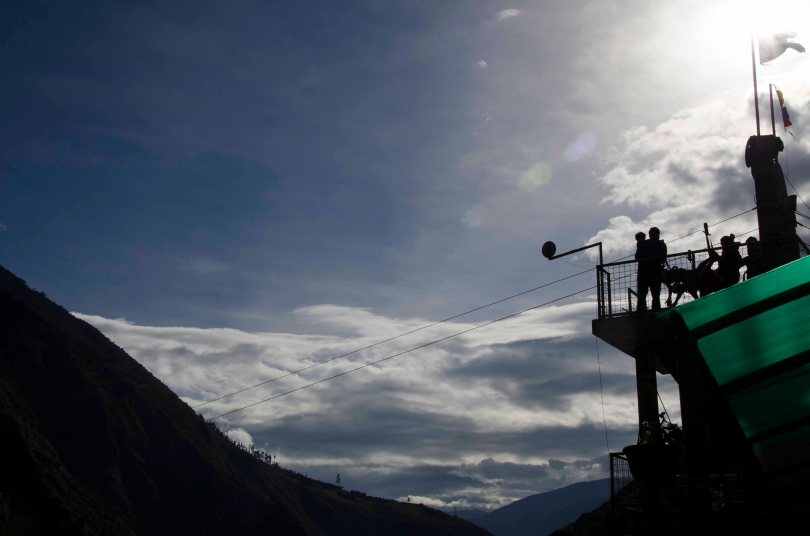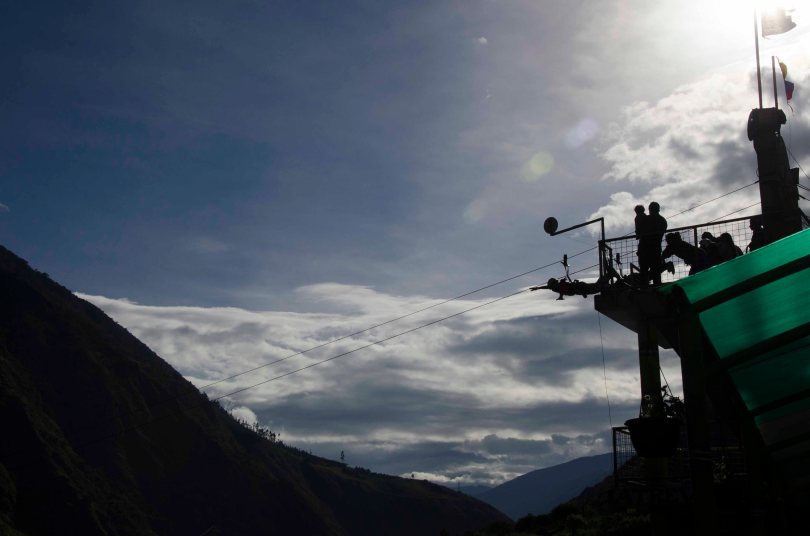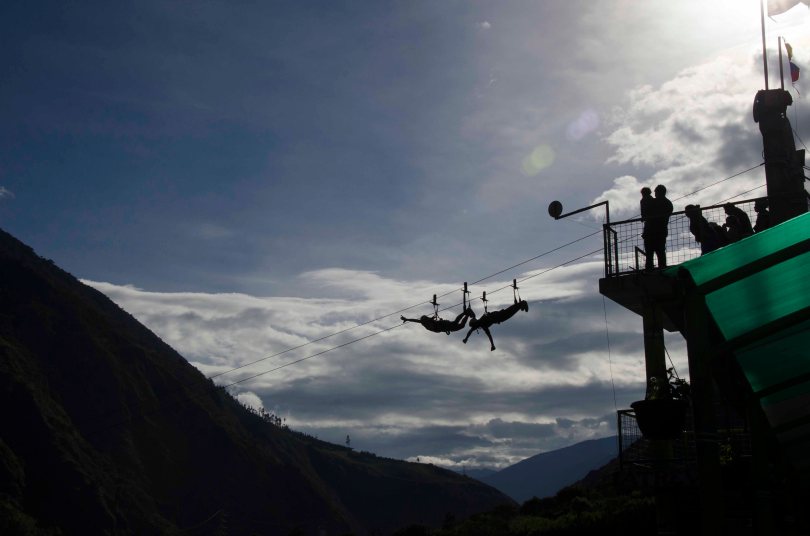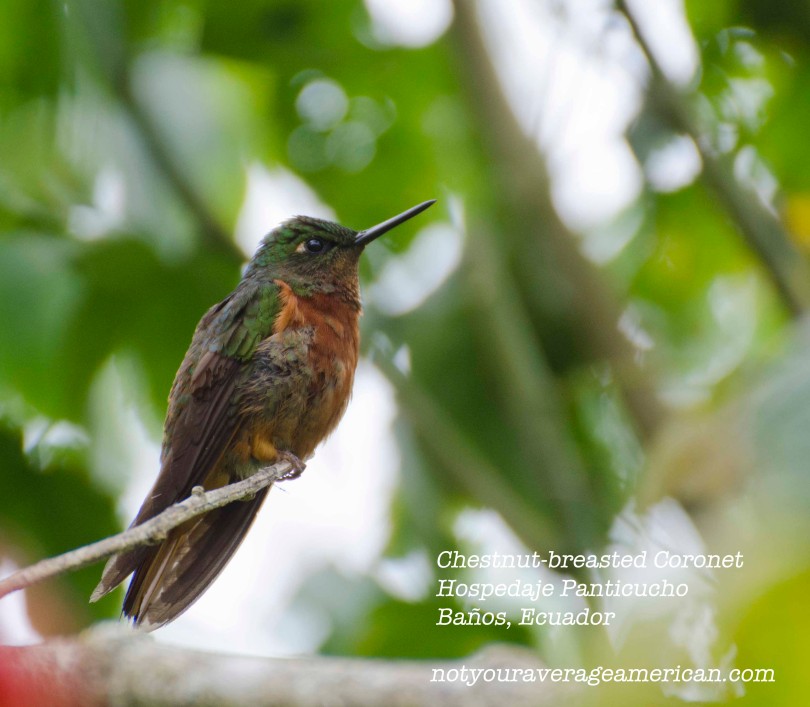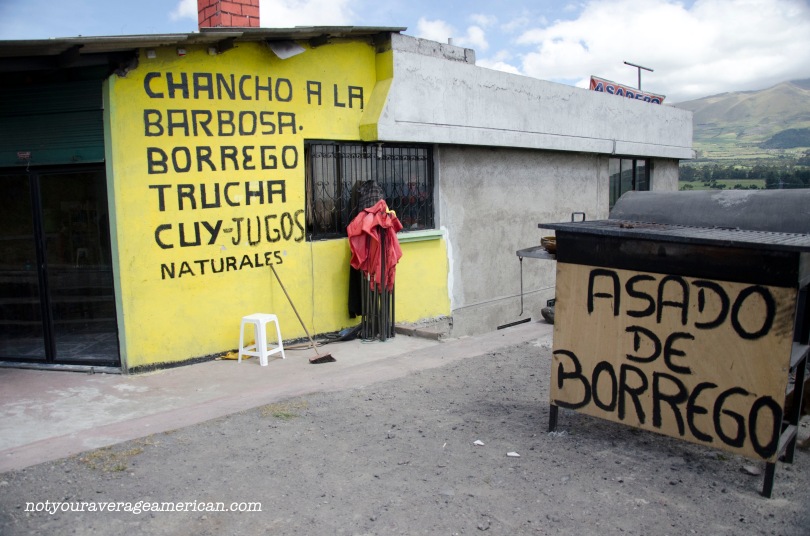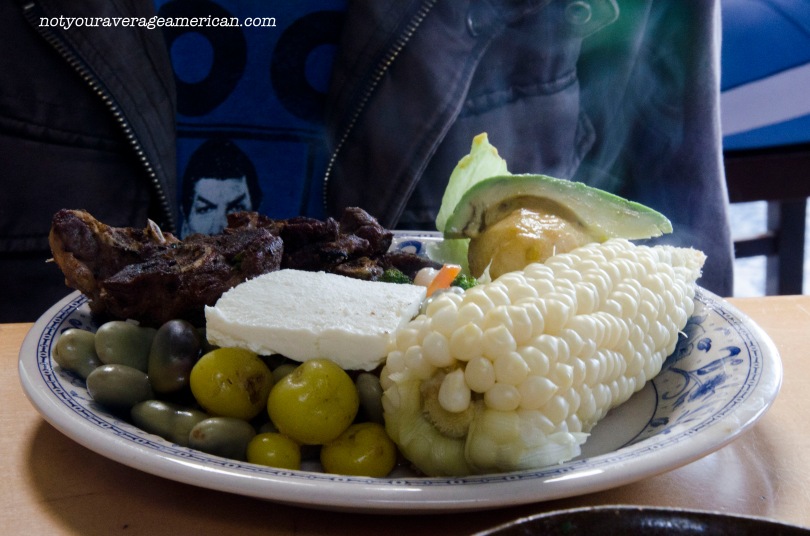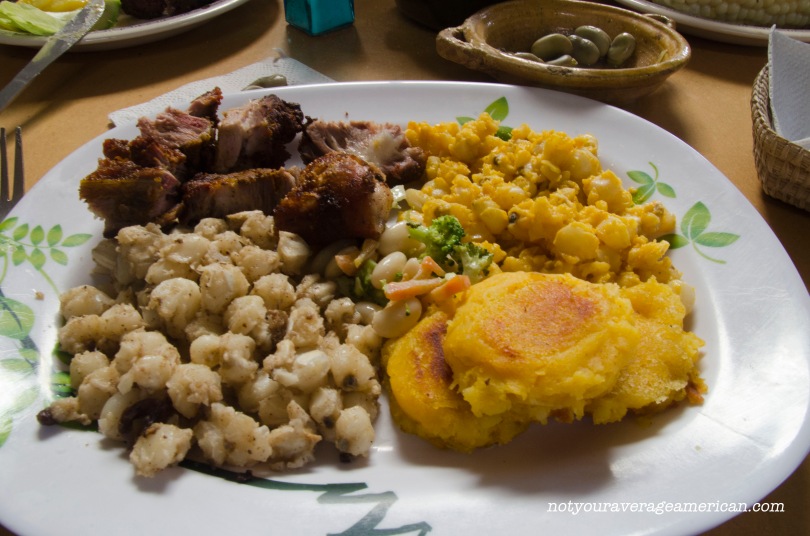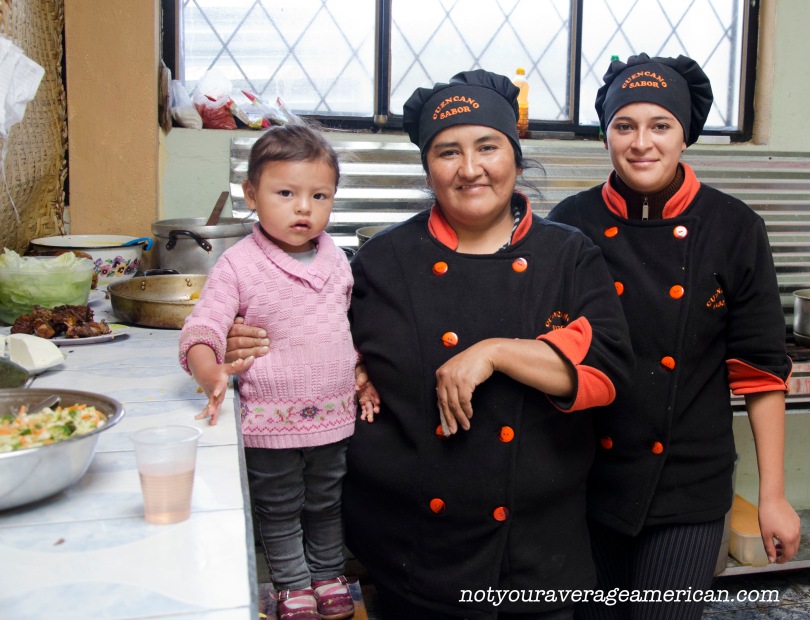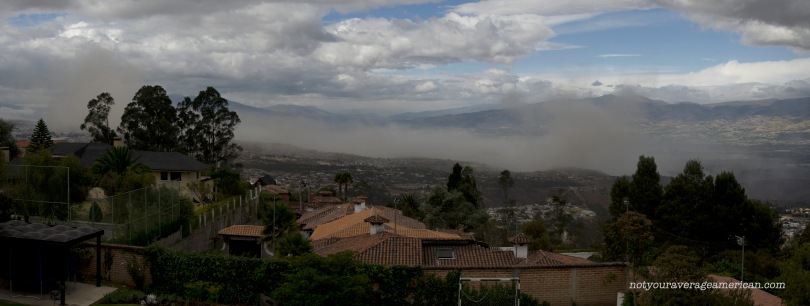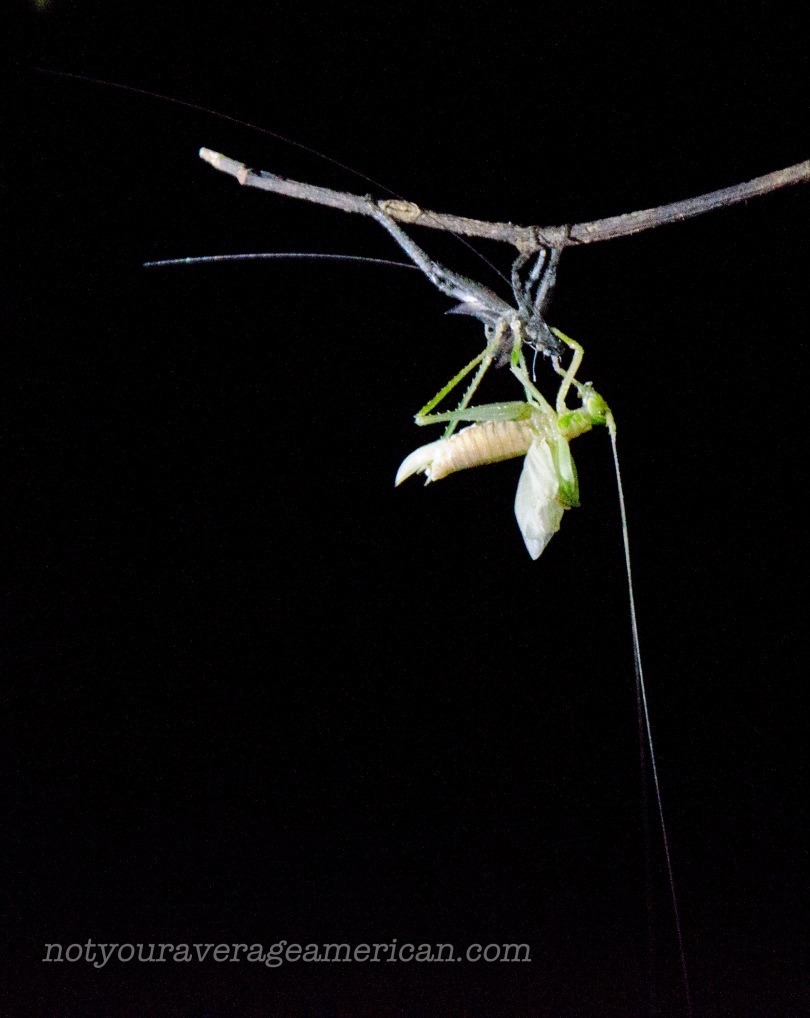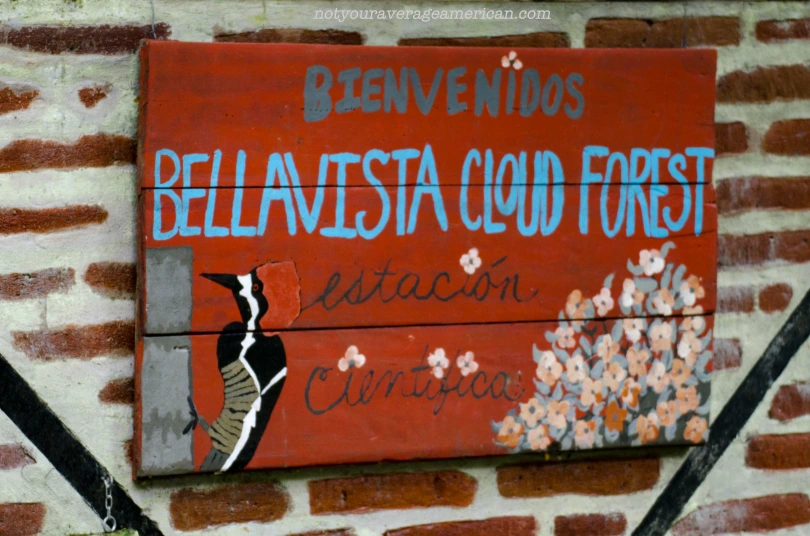
The Welcome Sign
For those of you that are regular readers, you already know how much
we love the Bellavista Reserve. It was one of our first trips in Ecuador. In fact, we hadn’t yet moved into our home but were still living in a hotel when the van from the Bellavista Lodge picked us up and transported us a meer 2 hours away into an environment so very different from the big city of Quito.
The problem with living in Ecuador is that we can’t afford to escape the city every weekend. Lodges like Bellavista, though beautiful and well-worth visiting, can add up and our budget just can’t handle it. That’s why I was thrilled to learn that we could stay at the Reserve’s Scientific Research Station for just $18.00 per person, per night. It’s not as nice as staying at the Lodge but for a family that is comfortable with tent camping, it’s a definite step in the right direction.
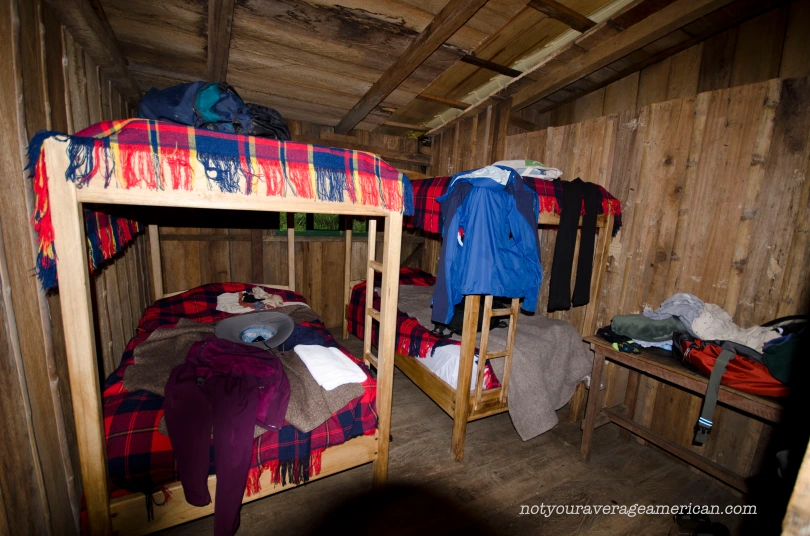
One of the bedrooms at the Bellavista Reserve Scientific Research Station.
Inside the Research Station, you’ll find a hallway with rooms on either side. Six of them, in fact, each with bunk beds to sleep 4 people per room. We comfortably slept 13 people, all but one sleeping on the bottom bunk. Bedding was provided by the Lodge. The Station can hold up to 24 people and a small house just outside can sleep another 4-6, but at twice the price.
Further inside the building is a large dining room with bench style seating and colorfully painted walls. Next to that is a galley kitchen, long and narrow, and well-supplied with dishes, cups, glasses, and silverware. There are some very large pots and pans for cooking for large groups. A stove with three huge burners is hooked up to gas. There are bottles of potable water as well as a sink for washing dishes. That water is cold water only indoors but showers had wonderfully hot running water! And believe me, a hot shower after hiking a muddy, strenuous Cloud Forest trail is a beautiful thing to have. In fact, the toilet facilities were more than adequate with flush toilets and toilet paper (sometimes not found in Ecuadorian establishments). The Lodge provided a towel for each of us. We placed our own bar of soap and hand towel at the community sink.
We also brought our own iron cast skillet, sharp knife and chopping board, stove-top percolators for coffee, as well as dish towels just in case. All came in handy.
To keep costs down, we supplied our own food and cooked our own meals. We did take turns cooking as the kitchen is narrow and having four different families try to cook individual meals at the same time would have been a fiasco. If you end up with dishwashing duty, try for breakfast as you will be able to look out the kitchen windows directly into the cloud forest.
If you don’t want to cook, you can always hire the Lodge to provide meals at the Station. Or you can hike (30 minutes) or drive (10 minutes) to the Lodge and enjoy the meals over there. Check the current prices before making this an option.
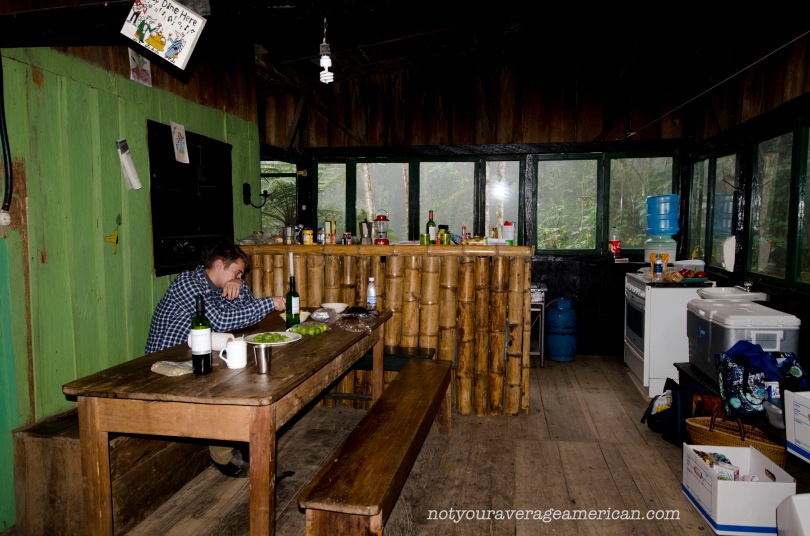
The dining room looking into the kitchen at the Bellavista Scientific Research Station.
There is no electricity and the Station is nestled into a bowl at the bottom of a hill where you see very little sun. It gets dark quickly. We brought extra candles (and once we drank enough wine, we had a great way to hold them) and our headlamps. Any kind of camping lantern would be a bonus. The outdoor patio with tables and chairs was a wonderful place to sit in the evenings. It was pleasant, if chilly, with very few bugs. And we could use a gas powered lantern safely while outdoors. But nighttime brought other guests, well after we went to bed. If the sound of little critters bothers you, just remember you’re in the wild and a few animals are to be expected. Though none of us had a middle of the night encounter with any creatures, we do know they don’t like banana bread. One bite was taken from an entire loaf wrapped in aluminum foil. But one bite only. If I had to guess, I would like to think that an olinguito had somehow found a way in and was touring the kitchen for an easy meal.
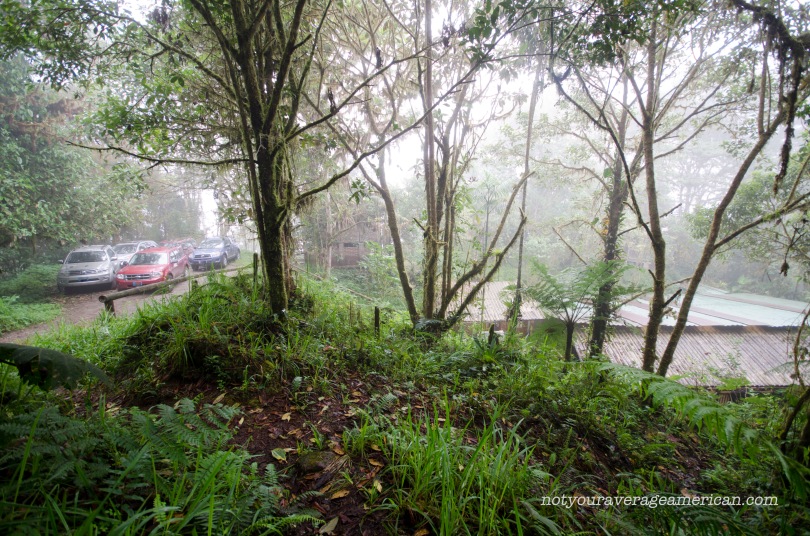
The parking lot on the left and the Research Station roof on the right.
The Research Station is located on a backroad with only a locked gate to hint that it might even exist. It’s well hidden and difficult to see from the road providing a layer of privacy. The drive down is steep and in wet weather could possibly require a 4-WD vehicle. Parking at the bottom is tight. We managed to fit 5 vehicles with a series of multiple point turns that would do our driving instructors proud. Of course, you don’t need cars to get here. The lodge will help you with transportation if need be.
In case you can’t tell, I can highly recommend staying here. It was a great place to spend time with friend. Our teens hung out on the patio chatting and playing cards while the more adventurous of us disappeared into the Cloud Forest for hours at a time. Below, you’ll find some of the great photos I was able to take on a single weekend. If you prefer to see the pictures in large format, click on any single one and you can view a slideshow of them all.

Grass-green Tanager enjoys breakfast.

A Cinnamon Flycatcher seen from the Lodge parking lot.

Looking from the Parking Lot down onto the Research Station. The roof closest to us on the left are showers and toilets. The main building holds rooms for sleeping, the dining room, and the kitchen.

Sunrise at only a short walk from the Bellavista Reserve Scientific Research Station.

Beautiful color on this Gorgeted Sunangel Hummingbird.

It’s rare to catch color in the chin markings of a Collared Inca Hummingbird.

This was the season of the metallic blue bug at Bellavista. They were everywhere!

A Golden Breasted Puffleg Hummingbird (pufflegs confirmed in another photo)

Just a short walk from the Scientific Research station is this beautiful view point of the Andes. It’s best enjoyed at sunrise.

A Masked Trogon seen from the Lodge grounds.

The Welcome Sign

The dining room looking into the kitchen at the Bellavista Scientific Research Station.

Happy Wall in the dining room!

Orchids hanging from the canopy.

White-banded Tyrannulet

Itsy, bitsy, spider.

The feeders at the Bellavista Lodge are a constant source of entertainment.

This is a Booted Racket-tail Hummingbird. I wish we knew why he sported such lovely cotton balls.

Cloud Forest as seen from one of the trails at the Bellavista Reserve.

Sunrise as seen only a short walk from the Scientific Research Station at Bellavista Reserve.

Is this the same Golden Breasted Puffleg in light that doesn’t show those feathers on the chest or could it be a female Glowing Puffleg? The problems with id-ing hummingbirds in Ecuador!

Frogs can be hard to find but it’s not impossible.
